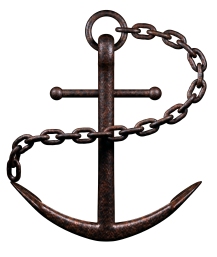Whether you work for a for-profit or nonprofit organization, like IMA, which I lead as CEO, it’s a challenge to be relevant and valued in serving diverse needs and cultures around the globe. A starting point is to have a global network, a family or community if you will, for sharing common needs, advocacy, and values at a broader societal level but also to make sure that you “sprout” local roots in serving unique needs in specific markets. Both are necessary for
global and local market relevance, but, as is the way of business, it’s often easier said than done.
 Global Family
Global Family
Most global organizations are networks of offices spread throughout the world. The headquarters serves the global membership from a central location(s) and communicates with its individual locales to serve their local needs, demonstrate the highest standards of integrity and professional ethics, and serve the public interest.
One way your organization can achieve this is by being involved with standard-setting bodies or advisory panels. Your organization will have a voice in the decisions shaping its industry and will, therefore, affect your stakeholders. And once you become a part of these bodies, make sure to maintain an ongoing dialog and active participation.
For example, IMA is involved with a variety of influential bodies. We’re currently a full voting member of the IFAC (International Federation of Accountants), which has helped us increase our global influence and relevance on matters of public policy, support for emerging economies, standards (e.g., accounting, education, and ethics), and best practices. Recently we were named a full voting member of the International Integrated Reporting Council (IIRC), which focuses on corporate reporting and analysis for internal and external stakeholders.
Local Roots
As organizations are becoming increasingly global, they can’t overlook the value of in-person connections to sustain the growth of engagement with the organization. Some nonprofits, like IMA, offer their members local chapter groups that provide a personal, in-person experience for networking, best practices sharing, and continuous learning and growth. Understanding local needs in a genuine and intense manner and how they may vary from “the corporate template” is key to local engagement with your global network of products and services.
 To connect your global organization to its local members or staff, think about their needs and how you can address them within the local area. For IMA, our chapters serve as our local roots to communicate the universal language of business but with different needs, customs, and cultures specific to each region. Other global organizations host periodic global summits or board meetings, provide online forums for discussion, or offer volunteer opportunities to engage their stakeholders.
To connect your global organization to its local members or staff, think about their needs and how you can address them within the local area. For IMA, our chapters serve as our local roots to communicate the universal language of business but with different needs, customs, and cultures specific to each region. Other global organizations host periodic global summits or board meetings, provide online forums for discussion, or offer volunteer opportunities to engage their stakeholders.
In turn, these chapters and local community groups foster the need for volunteers. They devote their time and talent to spread the word about the organization and are the link between their global network and the people they serve. Volunteers make serving the mission of the organization possible, particularly in a nonprofit, through their ambassadorship.
A Time of Thanks and an Inspiring Look Forward
This is the time of year when organizations of all types reflect on the strides they’ve made and hold aspirations for the future. This year, IMA has been advancing the management accounting profession by becoming more active in joining global bodies, and I’m proud of IMA’s growing community of volunteers and chapters around the world–truly a global family with local roots. But, like any family with diverse needs and backgrounds, it’s an ongoing challenge to be aligned on a common purpose.
I’m personally grateful for IMA’s global community of volunteers who have worked tirelessly to create stronger organizations and a better society. IMA’s volunteers are truly a competitive asset for the organization. We’re fortunate to have a network of more than 300 student and professional chapters to learn, grow, and contribute.
How is your organization dealing with the challenges and opportunities of being globally relevant? What are some of the approaches that have worked and some new approaches you may try in 2015?
Written by Jeff Thomson, CMA, CAE
Follow me on Twitter @ima_JeffThomson
Related Articles
How to Create a Unified Culture in a Company With Multiple Offices
Engaging with Stakeholders

 Enforce the Code from the Top-Down
Enforce the Code from the Top-Down
 The two stages most pertinent to management accountants and financial professionals are insight and foresight, as they are the most forward-looking. With these in mind, CFOs are able to act as trusted business advisors and leaders to help create sustainable growth.
The two stages most pertinent to management accountants and financial professionals are insight and foresight, as they are the most forward-looking. With these in mind, CFOs are able to act as trusted business advisors and leaders to help create sustainable growth.


 Abrupt changes happen overnight…
Abrupt changes happen overnight…